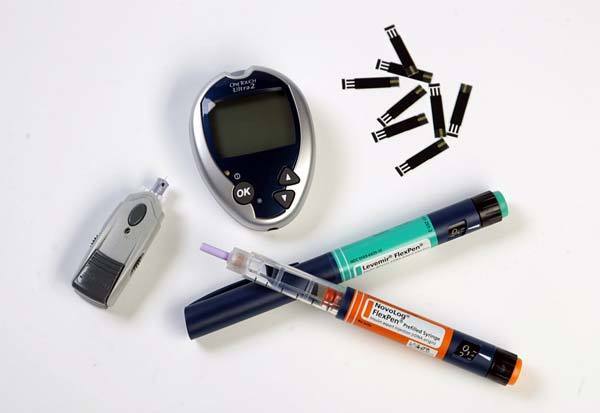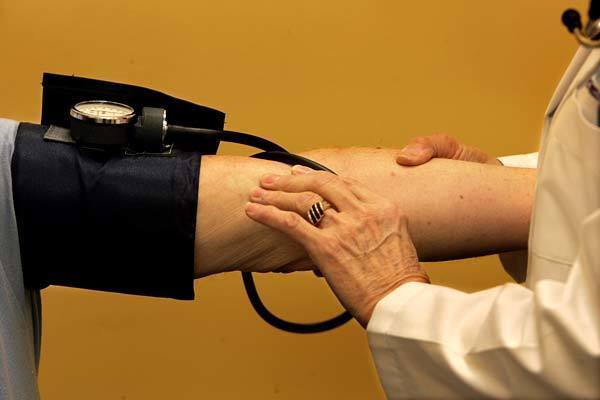Photos: The seven guidelines for heart health

If you want to improve the health and fitness of your heart and blood vessels, you can. Basic lifestyle changes involving diet, exercise and smoking can make a big difference. It also helps to keep an eye on some key numbers, including
Last year, the
Here’s a closer look at the new guidelines for heart health.
By Jill U. Adams / Special to the Los Angeles Times
Photo Gallery: Kelsey Ramos / Los Angeles Times (Clockwise from top left: Damon Winter, Reuben Munoz, Jay L. Clendenin, Gary Friedman / all Los Angeles Times)

Not only will physical activity help in the weight category, it also reduces
The AHA guidelines say to exercise moderately for at least 150 minutes per week or exercise vigorously for at least 75 minutes per week.
More:
Photos: 13 great beach, mountain, park places to run in L.A.
Get moving: Where to start (AHA)
Tips for long-term success (AHA)
10 ways to help children develop health habits (AHA)
(Jay L. Clendenin / Los Angeles Times)

Dont do it. This is at the top of the list because the AHA calls
To meet the AHA criteria, you should be a nonsmoker or have quit for at least one year.
More:
Quitting makes economic sense
Dealing with urges to smoke (AHA)
How to avoid weight gain when you quit (AHA)
Calculator: Cost of smoking (AHA)
(Reuben Munoz / Los Angeles Times)

The guidelines advise eating at least 4 1/2 cups of fruits and vegetables per day, at least 3 ounces of whole grains per day, at least two servings of fish each week, less than 1,500 milligrams of sodium per day and no more than 450 calories worth of sugar-sweetened beverages in a week. To meet
More:
Scientists now saying carbs, not fat, are to blame for America’s ills
Smart cooking substitutions (AHA)
What to look for when eating fast food (AHA)
Recipes: Heart-healthy cooking (AHA)
(Rick Loomis / Los Angeles Times)
Advertisement

Studies have shown that diets high in fruits and vegetables can reduce
The sodium goal is lower than in previous guidelines, but new data support the 1,500 mg daily limit.
More:
Scientists now saying carbs, not fat, are to blame for America’s ills
Smart cooking substitutions (AHA)
What to look for when eating fast food (AHA)
Recipes: Heart-healthy cooking (AHA)
(Damon Winter / Los Angeles Times)

Weight also correlates with
More:
Calculator: Body mass index (BMI) (AHA)
5 goals and tips for losing weight (AHA)
Get your daily calorie needs (AHA)
Keeping the weight off (AHA)
(Mel Melcon / Los Angeles Times)

There are three important physiologic measures that increase the risk of
Studies show that people who keep all three factors in the healthy range reduced their risk of death from cardiovascular disease over 16 to 22 years by 70% to 85% compared with people with at least one measure in a high-risk range.
The AHA guidelines say that fasting blood glucose should be below 100 mg/dL of blood.
More:
Recent news and resources
Delicious
Understand your risk for diabetes (AHA)
Tools and resources (AHA)
(Gary Friedman / Los Angeles Times)

The AHA guidelines say that blood pressure should be maintained below 120/80 millimeters of mercury.
More:
Blood pressure guide: What you can do for yourself
Why high blood pressure matters (AHA)
High blood pressure risk calculator (AHA)
Your risk for high blood pressure (AHA)
(Mark Boster / Los Angeles Times)
Advertisement

The AHA guidelines say that total cholesterol should be below 200 milligrams per deciliter of blood.
Read the full story: The new guidelines for heart health
More:
Heart risk starts early: Children and cholesterol screenings
Researchers work to harness power of good cholesterol
Cooking for lower cholesterol (AHA)
Avoid common misconceptions (AHA)
(Mel Melcon / Los Angeles Times)







